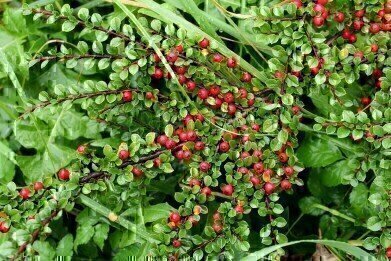Air Clean Up
What Are Pollution Super-Plants?
Mar 10 2021
A team of researchers from the Royal Horticultural Society have discovered a number of so-called “super plants”, capable of mitigating the worst effects of air pollution and climate change. In their latest study, they compared and contrasted the ability of different types of shrubs to absorb contamination from the air beside busy roads and motorways.
Their findings demonstrate that cotoneaster is one such super-plant, since it can remove at least 20% more pollution particles from the air in the vicinity of roads which experience heavy traffic than other plants. The paper is just part of an ongoing project by the RHS to look at how horticulture, gardens and green spaces can be leveraged to combat environmental issues such as poor air quality, heatwaves and flooding.
A super shrub
As part of the research, the team of scientists used sophisticated air monitoring technology to test how effectively different shrubs could soak up pollution from roads both busy and quiet. Cotoneaster consistently outperformed hawthorn and western red cedar on the streets with the heaviest traffic, removing at least a fifth more contaminants than its counterparts every time. There was no discernible difference between the performance of the shrubs on smaller, less busy roads.
The success of the cotoneaster is thought to lie with the density of its canopies and the hairiness of its leaves, both attributes that aid in trapping the particles of pollution. In fact, the researchers found that a one-metre hedge made up of cotoneaster plants is capable of absorbing the same amount of pollution produced by a car over a 500-mile journey in just seven days. Therefore, it would make an ideal plant choice in pollution hotspots around the country, especially those located in urban metropoles.
Proactive prevention
Cotoneaster joins ivy, hawthorn and privet on the RHS’s list of super-plants. Ivy is lauded for its ability to impart a cooling effect on the surface of buildings during heatwaves, thus reducing the need to run air conditioning and preventing structural damage caused by overheating. Hawthorn and privet, on the other hand, can help to mitigate the worst impacts of torrential rainfall, reducing the likelihood of localised flooding.
A recent RHS survey of over 2,000 British homeowners revealed that a third were concerned about poor air quality in their back gardens, but only 6% were actively taking steps to combat it. With that in mind, any homeowner who is keen to follow the lead of climate change scientists to slow the phenomenon down would do well to include all three plants in their horticultural displays. Cotoneaster, on the other hand, is more suited to roadsides and pollution hotspots, so may be more beneficial to local planning authorities and councils.
Events
May 05 2024 Seville, Spain
May 13 2024 Munich, Germany
May 23 2024 Beijing, China
May 23 2024 Beijing, China
Jun 10 2024 Algiers, Algeria














